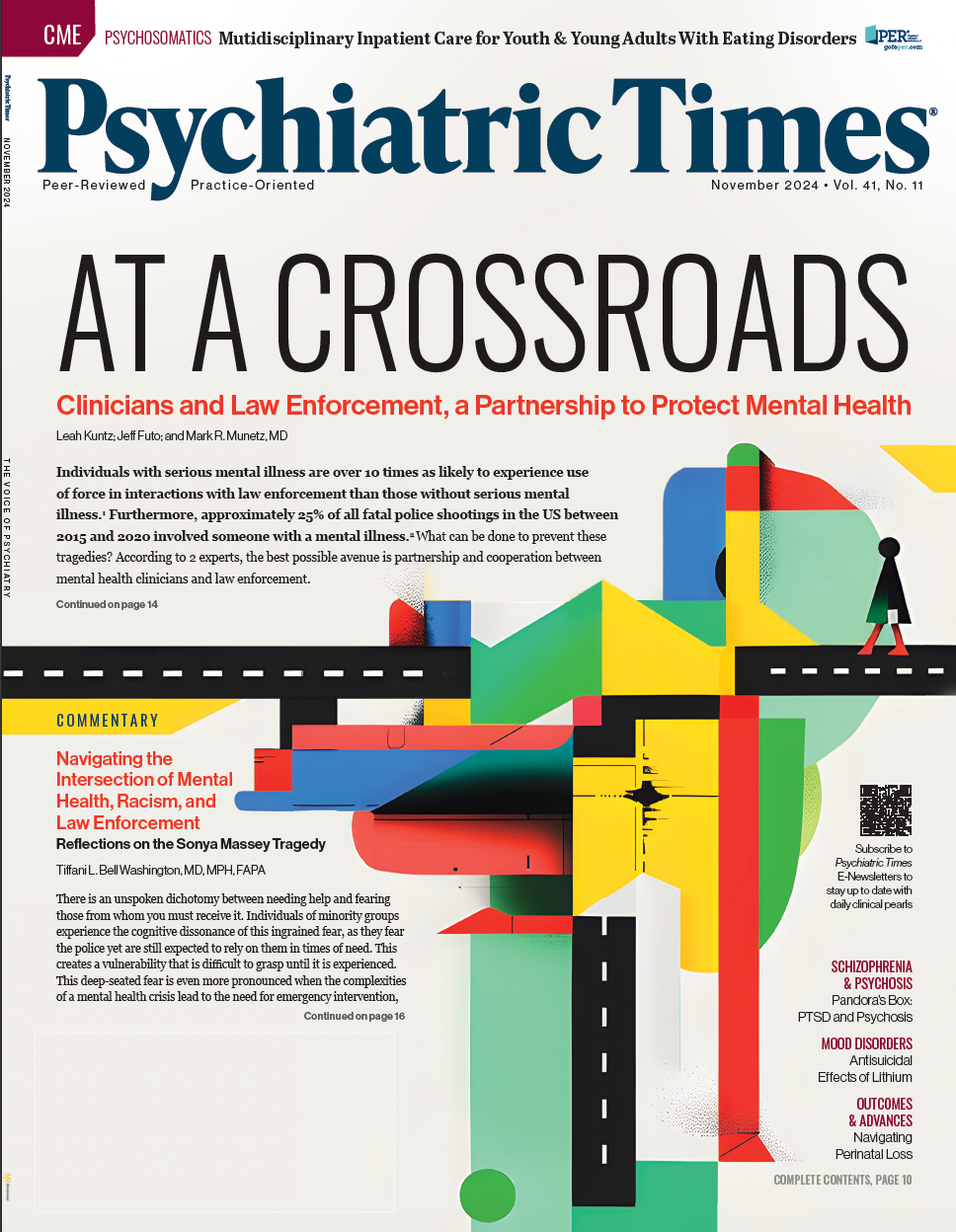TRANSLATING RESEARCH INTO PRACTICE
Rajesh R. Tampi, MD, MS, DFAPA, DFAAGP, Column Editor
A monthly column dedicated to reviewing the literature and sharing clinical implications.
There is some controversy regarding lithium’s ability to prevent suicide. Given the challenges related to suicide research, specifically that rates of death by suicide are so low that a very large sample size is needed to achieve statistical significance, it is difficult to measure suicide in a single study. Relatively small sample sizes limited previous systematic reviews. This column reviews a systematic review and meta-analysis of 7 randomized controlled trials (RCTs), including a recent RCT that enrolled over 500 participants. The aim was to provide clarity on lithium’s efficacy in suicide prevention.
The Study
Riblet NB, Shiner B, Young-Xu Y, Watts BV. Lithium in the prevention of suicide in adults: systematic review and meta-analysis of clinical trials. BJPsych Open. 2022;8(6):e199.
Study Funding
This study was funded by the Veterans Affairs National Center for Patient Safety Center of Inquiry Program in Ann Arbor, Michigan.
Study Objectives
To assess the efficacy of lithium in preventing suicide.
Methodology
This study was a systematic review and meta-analysis of RCTs exploring the effect of lithium on suicide. Systematic review followed Cochrane guidelines, and the investigators searched the literature from January 1, 2015, to November 30, 2021, using 5 databases: MEDLINE (via Ovid), Excerpta Medica Database (Embase), Cumulative Index to Nursing and Allied Health Literature (CINAHL), the Cochrane Central Register of Controlled Trials (CENTRAL), and PsycInfo. Additionally, references of the included studies were reviewed, and ClinicalTrials.gov was searched for additional studies.
Eligibility criteria included RCTs with adults older than 18 years assigned to lithium or control (placebo, usual care, or waitlist) and reporting death by suicide as a primary or secondary outcome. There were no restrictions on language. Studies were included regardless of suicide events and were not limited by diagnostic condition.
The efficacy of lithium vs control for preventing death by suicide was evaluated by calculating the OR with 95% CI and P values using the Peto method. Statistical significance was defined as P less than .05 and 95% CI not crossing 1. Heterogeneity was assessed using the Cochran Q test and the I2 statistic, with substantial heterogeneity defined as P less than .10 and I2 greater than 50%.
Additional review of the data included confirmatory analysis using a Poisson regression model with random effects and calculating an incidence rate ratio (IRR) for suicides over person-years. Publication bias was assessed by generating a funnel plot for the primary outcome and visually inspecting for asymmetry. Quality of evidence was assessed using GRADEpro software. Ethics approval and informed consent were not required for this study.
Study Strengths
1. This is an extensive review that includes over 1100 individuals.
2. Individuals with both major depressive disorder and bipolar disorder were included.
3. GRADE analysis revealed the evidence supporting lithium’s antisuicidal properties was moderate.
4. The authors were conservative in classifying 1 death by drug overdose in the placebo group as an accidental death as opposed to a suicide; including this event as a suicide would have significantly changed study results in favor of lithium.
5. There was no evidence suggesting publication bias.
6. The authors declared no conflicts of interest.
Study Results
The systematic review yielded 7 RCTs that met eligibility criteria, comparing lithium with control using death by suicide. All studies were conducted in North America or Europe from 1973 to 2022 and involved adults with a diagnosis of major depressive disorder or bipolar disorder.
The odds of suicide were lower for the 568 individuals on lithium compared with the 570 in the control group (OR, 0.30; 95% CI, 0.09-1.02; P = .05), although the difference was not statistically significant. The IRR also favored lithium (IRR, 0.22; 95% CI, 0.05-1.05; P = .06), but this result was similarly not statistically significant.
Study Limitations
1. Target and actual lithium levels varied among the trials.
2. Some trials struggled with low recruitment.
3. Some trials struggled with poor treatment adherence.
4. Some trials had high attrition rates.
5. Most studies had short follow-up (less than 1 year).
No substantial or significant heterogeneity was observed among the studies (Cochran Q, 3.60; I2 = 0%; P = .61). One study (Girlanda 2014) had a wide CI and favored the control group, which was care as usual. All other studies favored the intervention group and used a placebo as the control group.
Risk of bias assessment indicated concerns about study assignment and adherence due to reported nonadherence to the study drug and high attrition rates. Recruitment issues were also noted in several studies. A visual inspection of the funnel plot showed no evidence of publication bias. In the case of 1 participant death by drug overdose, the authors conservatively decided not to include this as a suicide. Had they included this death as a suicide, the study would have reached statistical significance and more strongly favored lithium. According to Grading of Recommendations Assessment, Development, and Evaluation (GRADE) analysis, the certainty of the evidence in favor of lithium was moderate, highlighting its importance in relation to mortality outcomes.
Conclusions
The 7 RCTs included in this systematic review and meta-analysis found that the odds of suicide were lower in individuals treated with lithium. However, these results were not statistically significant.
Practical Applications
This study provides moderate evidence that lithium lowers the risk of suicide. Clinicians should consider lithium as an intervention to reduce suicide risk. More data are needed to clarify the long-term antisuicidal effects of lithium and its role in decreasing impulsivity.
Bottom Line
This systematic review and meta- analysis aimed to provide clarity on an important topic in psychiatry: preventing suicide. Although the results were not statistically significant, this review had moderate-quality evidence supporting lithium’s ability to lower mortality rates. Clinicians should consider the unique risk factors, characteristics, and values of their patients when considering utilizing lithium in the treatment of suicidal patients.
Dr Woo is a second-year psychiatry resident at Creighton University in Omaha, Nebraska. Dr Schuster is a fourth-year psychiatry resident at Creighton University. Dr Mullen is a fourth-year psychiatry resident at Creighton University. Dr Tampi is a professor and chair of the Department of Psychiatry at Creighton University School of Medicine and Catholic Health Initiatives Health Behavioral Health Services. He is also an adjunct professor of psychiatry at Yale School of Medicine in New Haven, Connecticut, and a member of the Psychiatric Times editorial board.








